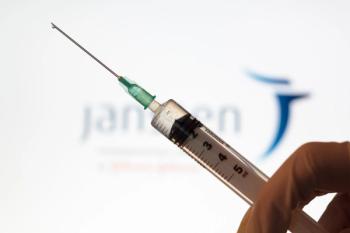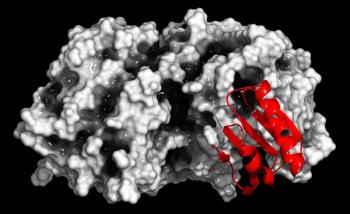
Pharmacy Practice in Focus: Oncology
- January 2023
- Volume 5
- Issue 1
Novel Immunotherapy in Up-front Setting Shows Improved Outcomes in ALL
Study data demonstrate large step forward for this patient population
The up-front treatment of newly diagnosed acute lymphoblastic leukemia (ALL) in adults has included a multiagent chemotherapy for several decades, and it induces remissions in most patients.1 Unfortunately, these remissions tend not to be durable, with many patients ultimately relapsing and requiring additional treatment.2-4
Several new highly active therapies for relapsed ALL have been approved since 2010 but have yet to be incorporated into up-front regimens. Blinatumomab (Blincyto; Amgen), a CD3/CD19 bispecific T-cell engager, is one such molecule that has obtained FDA approval.5,6 As an indication of its activity, blinatumomab induces remissions in patients with overtly relapsed disease as a single agent with a composite response rate of 42% vs a 20% combined response rate for standard chemotherapy. In the BLAST study (NCT01207388), those with low-level disease treated with blinatumomab achieved high minimal residual disease (MRD) negativity rates (85%), which corresponded to a long median relapsefree survival of 35 months.
Given the activity of blinatumomab as a single agent in relapsed disease and as an “MRD eraser,” a clinical trial (NCT02003222) assessed the combination of chemotherapy with or without blinatumomab in patients with newly diagnosed BCR-ABL1–negative B-lineage ALL, incorporating this novel agent into the first-line setting.
During this trial, patients aged 30 to 70 years with Philadelphia chromosome–negative ALL were given a standard induction and consolidation regimen. Responding patients were then randomly assigned to either continue with 4 cycles of consolidation chemotherapy and maintenance or 4 cycles of blinatumomab interspersed between 4 cycles of the same consolidation chemotherapy and maintenance.
The primary end point of the trial was overall survival (OS) from time of randomization, with secondary end points of event-free survival and rates of MRD negativity. On account of the FDA approval of blinatumomab during the trial, patients who were MRD positive after consolidation proceeded only to the blinatumomab arm after March 2018 (ie, were not randomly assigned).
At the 64th American Society of Hematology Annual Meeting & Exposition, Litzow et al presented the first reported outcomes from this trial, which was activated in December 2013 and closed to enrollment in October 2019. Of the 772 patients screened for the trial, 488 were enrolled to induction therapy. Ultimately, 224 patients who were MRD negative were randomly assigned, with 122 to each arm.
In terms of allogeneic stem cell transplant, the arms were well balanced, with 22 patients in each proceeding to the induction therapy. A significant improvement in OS in favor of the blinatumomab arm (median OS, not reached vs 71.4 months; HR, 0.42; 95% CI, 0.24-0.75; 2-sided P = .003) was seen at a median follow-up of 43 months. Notably, at 3.5 years of follow-up, 83% of patients treated with blinatumomab were still alive vs only 65% of those treated with chemotherapy alone.
This practice-changing study is one of the first to document improved outcomes for patients with ALL who were treated with a novel immunotherapy in the up-front setting. Median OS of these patients appears longer than historical comparisons, setting a new standard of care for patients aged 30 to 70 years with Philadelphia chromosome–negative ALL. As the trial’s data mature, the overall and relapse-free survival outcomes of the patients not randomly assigned who achieved MRD negativity with blinatumomab are eagerly awaited.
Additionally, the role of allogeneic stem cell transplant in patients who are MRD negative remains undetermined. Given the negative prognostic value of a Philadelphia chromosome–like genetic signature, the outcomes of this subgroup of patients treated with the E1910 regimen are of significant interest.
Ultimately, this study demonstrates a large step forward for newly diagnosed patients with Philadelphia chromosome–negative ALL. Future directions should focus on the earlier incorporation of other novel agents, such as chimeric antigen receptor T-cell therapy and venetoclax (Venclexta; AbbVie and Genentech). As OS improves for the group as a whole, deescalation of therapy for those with early and deep MRD negativity should also be pursued in large cooperative group trials.
ABOUT THE AUTHOR
Neil Palmisiano, MD, MS, is deputy director of phase 1 therapeutics for hematologic malignancies and system leader for leukemia at RWJBarnabas Health, and co-medical director of the Office of Human Research Services at Rutgers Cancer Institute of New Jersey.
REFERENCES
1. Rowe JM, Buck G, Burnett AK, et al. Induction therapy for adults with acute lymphoblastic leukemia: results of more than 1500 patients from the international ALL trial: MRC UKALL XII/ECOG E2993. Blood. 2005;106(12):3760-3767. doi:10.1182/blood-2005-04-1623
2. Fielding AK, Richards SM, Chopra R, et al. Outcome of 609 adults after relapse of acute lymphoblastic leukemia (ALL); an MRC UKALL12/ECOG 2993 study. Blood. 2007;109(3):944-950. doi:10.1182/blood-2006-05-018192
3. Gökbuget N, Stanze D, Beck J, et al. Outcome of relapsed adult lymphoblastic leukemia depends on response to salvage chemotherapy, prognostic factors, and performance of stem cell transplantation. Blood. 2012;120(10):2032-2041. doi:10.1182/blood-2011-12-399287
4. Aguayo A, Cortes J, Thomas D, Pierce S, Keating M, Kantarjian H. Combination therapy with methotrexate, vincristine, polyethylene-glycol conjugatedasparaginase, and prednisone in the treatment of patients with refractory or recurrent acute lymphoblastic leukemia. Cancer. 1999;86(7):1203-1209. doi:10.1002/(sici)1097-0142(19991001)86:7<1203::aid-cncr15>3.0.co;2-3
5. Kantarjian H, Stein A, Gökbuget N, et al. Blinatumomab versus chemotherapy for advanced acute lymphoblastic leukemia. N Engl J Med. 2017;376(9):836-847. doi:10.1056/NEJMoa1609783
6. Gökbuget N, Dombret H, Bonifacio M, et al. Blinatumomab for minimal residual disease in adults with B-cell precursor acute lymphoblastic leukemia. Blood. 2018;131(14):1522-1531. doi:10.1182/blood-2017-08-798322
Articles in this issue
almost 3 years ago
FLT3 Inhibitors Sustain Prolonged Remission in AML Post HSCTalmost 3 years ago
Highlights From SABCS 2022 Clinical Trial DataNewsletter
Stay informed on drug updates, treatment guidelines, and pharmacy practice trends—subscribe to Pharmacy Times for weekly clinical insights.














































































































































































































